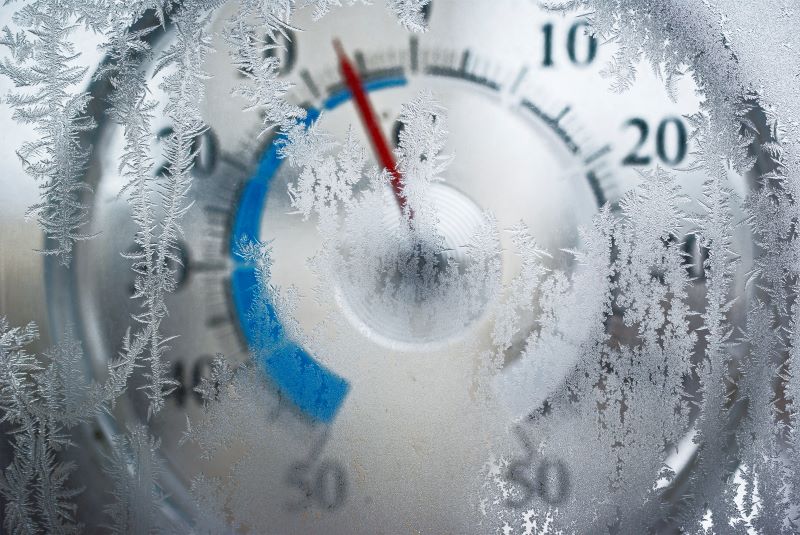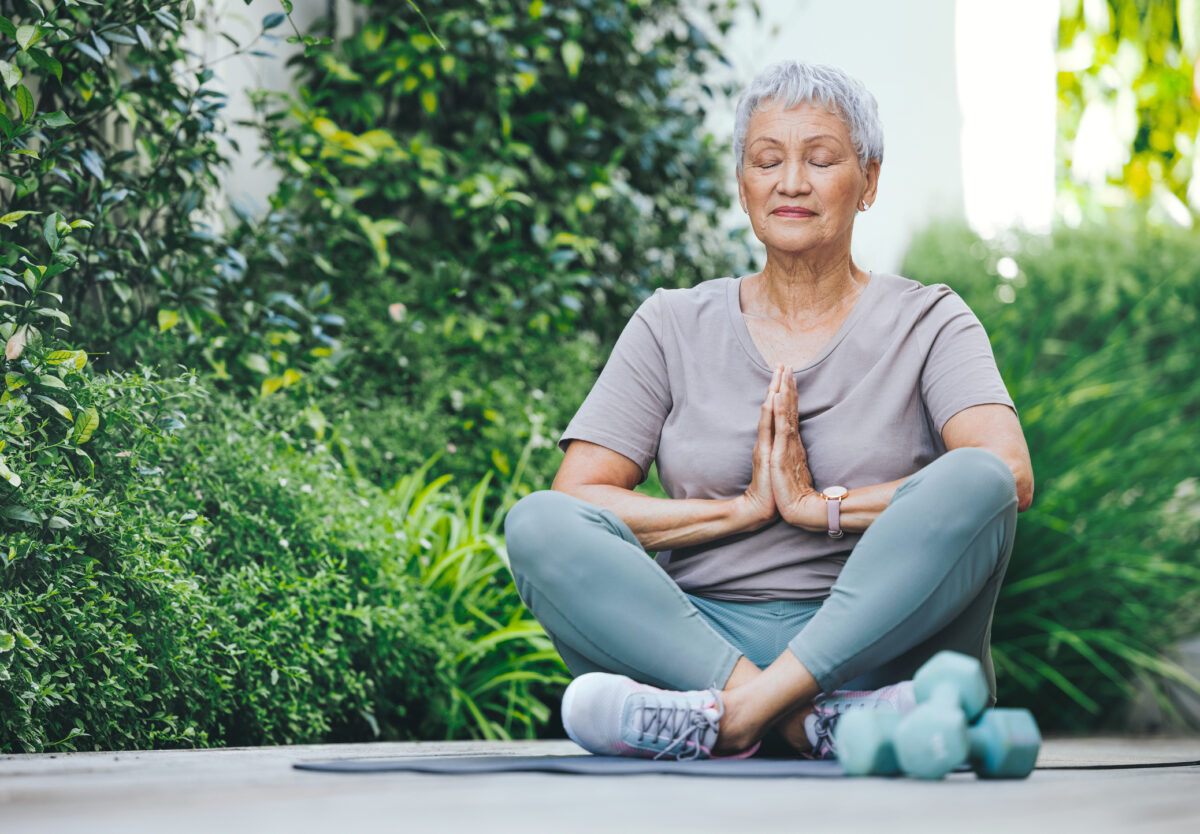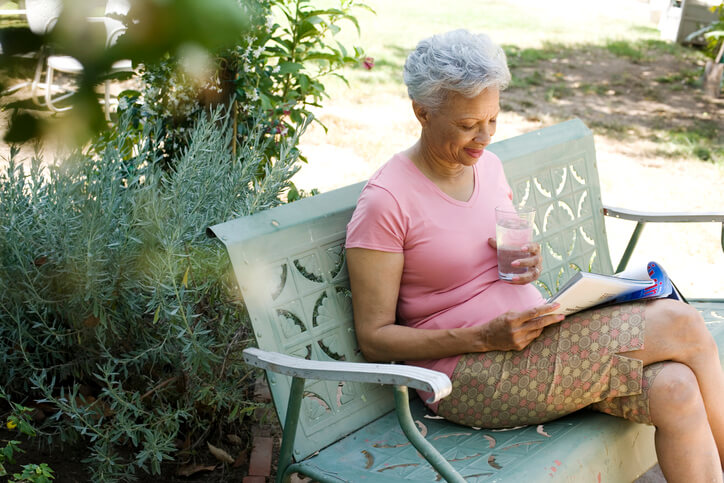You may already know that being outside in freezing temperatures can lead to hypothermia: a potentially life-threatening condition where your body temperature drops below 95° Fahrenheit.
But did you know that you can develop hypothermia even inside your home? From what you’re wearing to medications you’re taking, it’s important to know how to protect yourself against hypothermia, especially if you’re 50 or older.
Read on for a comprehensive definition of hypothermia, five risks to know about, plus prevention and treatment tips.

Hypothermia: Defined
Hypothermia develops when your body loses more heat than it generates or absorbs. When this happens, your brain, heart, lungs and other organs can’t function properly. If untreated, hypothermia can lead to cardiac arrest and death.
One immediate and recognizable warning sign is shivering, but hypothermia also includes cognitive and physical impairments, such as confusion, fumbling hands, memory loss, slurred speech, drowsiness, stiff muscles, or fatigue.
Frostbite, another cold weather risk, is the freezing of one’s skin, and typically impacts fingers, ears, feet and other extremities. Redness and/or a burning pain is an early sign of frostbite, while white or grayish skin, waxy or hard skin and numbness indicate more advanced frostbite. People with frostbite also might have or develop hypothermia.
Five Hypothermia Risks For People 50+ You May Not Know
1. Age
For people over 50, age itself is a risk factor when it comes to regulating body temperature. As you age, your body can’t control temperature as well due to a decrease in fat under the skin and muscle mass. Underlying health conditions such as diabetes can also make it harder to stay warm as we age.
2. Certain Medications
Some medications can alter the body’s ability to regulate temperature. Medicines that can lower your body temperature, especially in high doses, include:
- Clonidine (blood pressure drug)
- Sedatives
- Narcotic pain medications
- Antipsychotic drugs
- Beta-blockers
- General anesthetics
- Tricyclic antidepressants (overdose)
- Barbiturates
- Benzodiazepines
3. Alcohol Consumption
Be careful reaching for a hot toddy when you feel like warming up on a cold winter day. Alcohol widens the body’s blood vessels, lowering the skin’s surface temperature. Drinking too much alcohol also:
- Delays the onset of shivering, the body’s warning signal that your body temperature is too cool. (Shivering increases body heat.)
- Leads to intoxication, which impairs judgment and can cause confusion. This means, you may even not realize you’re cold.

4. Poor Nutrition and Dehydration
Malnutrition in general can increase your risk for hypothermia, as a low body mass index can interfere with your body’s ability to regulate temperature. Specifically, when your body isn’t getting enough iron, it can be difficult to maintain your body temperature, making you more susceptible to hypothermia. This is one of the many reasons why it’s important to maintain a balance diet.
Dehydration increases your risk of hypothermia, according to Cleveland Clinic. When your body is dehydrated, your blood volume may be lower. This affects the body’s circulation and can cause your body to lose heat faster, which may lead to hypothermia.
5. Mental Health and Medical Conditions
Medical or mental health conditions, such as high blood pressure, dementia, hypothyroidism or drug abuse disorder, may come with an increased risk of catching hypothermia. People with dementia or drug abuse disorder may not recognize when they’re exposed to extreme cold, from the outdoors or even their home thermostat, and also could have trouble getting dressed properly for cold temps. Low blood glucose levels associated with diabetes can also contribute to hypothermia as your body needs sufficient glucose stores to induce shivering.
Skin disorders such as psoriasis and burns can lead to insufficient heat production in the body, making you more susceptible to a lower body temperature and hypothermia.
Tips to Prevent Hypothermia for Adults Over 50
While the above factors raise the risk of hypothermia, especially for older adults, you can take the below nine steps to stay safe and prevent hypothermia and frostbite, both indoors and outdoors.
- Stay inside during extreme temperatures.
- Dress properly: Wear a balaclava or scarf that covers your face, gloves or mittens, a hat, water-resistant boots, and layered, loose-fitting clothing.
- Set your home thermostat at 68° Fahrenheit or higher.
- Remove wet clothing immediately to avoid getting cold.
- Avoid excessive sweating from exercise, like shoveling snow or other physical activities, since sweating makes your body lose heat more quickly.
Tip: Clearing snow may be unavoidable, but there are steps you can take to shovel safely. Use a smaller, plastic shovel; the plastic weighs less than metal and the smaller size reduces strain. Also, push snow out of the way, rather than lifting with the shovel. (If lifting is necessary, fill the shovel half-way or use a small shovel to reduce strain.)

- Avoid consuming excess alcohol during periods of extreme cold.
- Check with your primary care provider to determine if any of your medications could lower your body temperature.
- Eat a balanced diet and be sure to get enough nutrients like iron and essential minerals.
- Know the signs of hypothermia and seek medical attention if you notice hypothermia symptoms.
How To Treat Frostbite and Hypothermia
If you notice symptoms of hypothermia in yourself or a loved one, it’s crucial to get treatment immediately. The following steps are recommended by Centers for Disease Control and Prevention and apply to both frostbite and hypothermia, but as always, there is no substitute for seeking professional, medical attention.
- Go to a warm shelter right away.
- Remove any wet or cold clothing.
- Wrap yourself or a loved one in a blanket.
- For hypothermia: Make sure to cover the head, and also focus on the center of the body, including chest and neck. Electric blankets and skin-to-skin contact under a loose blanket are also effective.
- For frostbite: place impacted areas in warm, not hot, water. (Skin may be numb and the victim could easily be burned by scalding water or surfaces.) Do not using heating pads, hot stones, or fireplaces. Also, do not rub or massage the frostbitten area as this may cause more damage.
- Drink warm drinks such as hot tea (but avoid alcoholic beverages).
- Consult with your health care provider for recommendations on steps to take and whether to seek emergency medical attention.

With these tips in mind, you can take action to prevent hypothermia this winter for yourself and your loved ones.
This informational material shall not be considered medical or health advice. You should always consult your health care provider before changing your diet or starting a new exercise regimen. The Hartford assumes no responsibility for any decisions related to your medical or health care. Consult with your health care provider, nutritionist, or other health professional before making any decisions that may impact your health and well-being.







Thank you for the information presented It was informative.
Thank you.
Great information, thank you!